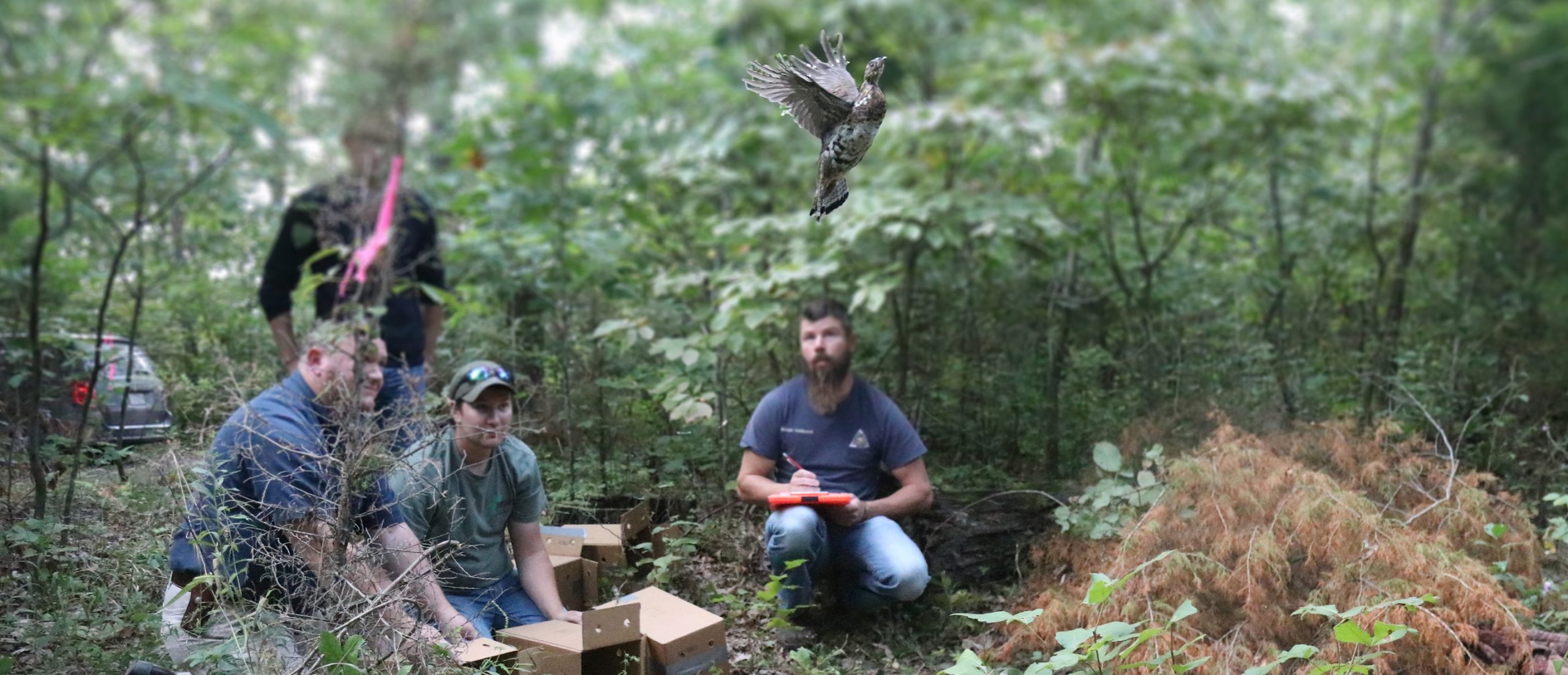Conservation in the Missouri River Hills Region
The NWTF has a rich history of delivering its mission in Missouri. From the grassroots efforts of its volunteers to work done at a landscape scale, the NWTF mission is alive and well in the Show Me State.
Missouri encompasses two NWTF Big Six Regions of Conservation, America’s Crossroads and America’s Mid-South Rebirth.
As part of its America’s Crossroads, the NWTF continues a decades-long partnership with the Missouri Department of Conservation in the state’s River Hills Region.
This effort supports active forest management on public and private lands to enhance wildlife habitat. A recent iteration of this partnership improved thousands of acres of wild turkey habitat, but it also was part of an MDC grouse restoration effort.
Over the last few years, MDC and the Wisconsin Department of Natural Resources collaborated to trap and transfer 300 ruffed grouse from Wisconsin to Missouri. Wild turkeys and grouse have differing habitat needs, but, interestingly, the grouse release sites were managed in such a way that supports both grouse and turkeys.
“Although excellent grouse habitat would typically be considered too thick to be suitable turkey habitat, the Grouse Focus Area, where most of the grouse were released, is a 25,000-acre landscape around the Daniel Boone and Little Lost Creek Conservation Areas,” said John Burk, NWTF district biologist for Missouri, Iowa, and Illinois. “The goal was to maintain 10 to 15 percent of the private land in the Grouse Focus Area as early successional habitat. Over a nearly 20-year effort, that goal was achieved, and the drumming of grouse can once again be heard in the Missouri River Hills, while also creating some great wild turkey habitat along the way.”
These conservation areas are managed primarily for grouse, so they are comprised of dense young hardwood stands. However, creating a large enough area to restore and maintain a viable grouse population required an increased effort to promote early successional habitat on the surrounding private lands.
Turkeys live at opposite ends of the successional scale, while grouse prefer the first 15 years of it. Managing and maintaining early successional habitat requires constant disturbance, so the idea is to create a patchwork of vegetative age classes. Although wild turkeys do not like thick grouse-favoring habitat, they do like areas that are a mix of grass, weeds and shrubby cover.
“The outcome is a net gain for both species,” Burk said.
In 2022 alone, NWTF dollars helped conserve or enhance over 1,800 acres of private lands as a part of this project through active forest management practices, like creating forest openings, timber stand improvement and prescribed fire. This amplifies the work done on the adjacent public land.
Prescribed burns on the Little Lost Creek and Daniel Boone Conservation Areas will be conducted about every five to 10 years in each burn unit, ranging in size from 75 to 300 acres. It is estimated that about 400 acres of prescribed fire will be implemented annually between the two units.
This partnership is occurring in Callaway County, which is often in the top five counties for turkeys harvested in Missouri. Active forest management is driving it.
CONNECT WITH US
National Wild Turkey Federation
770 Augusta Road, Edgefield, SC 29824
(800) 843-6983
National Wild Turkey Federation. All rights reserved.
